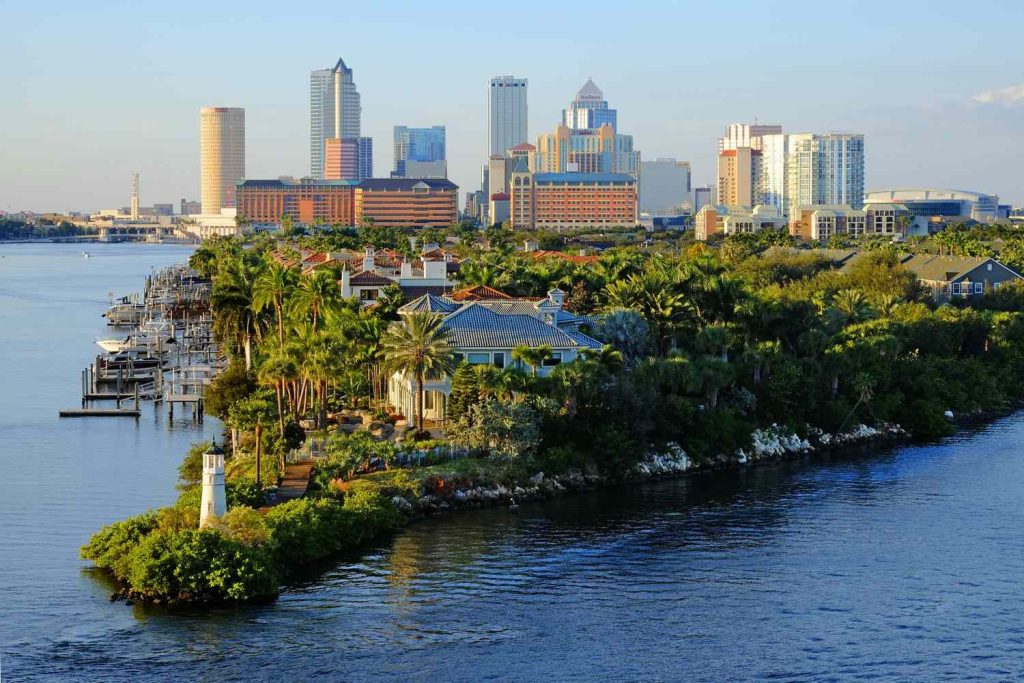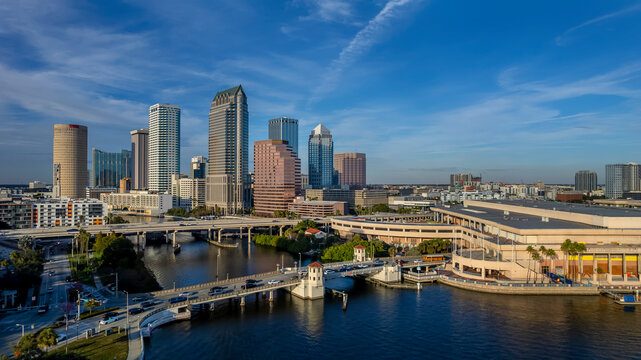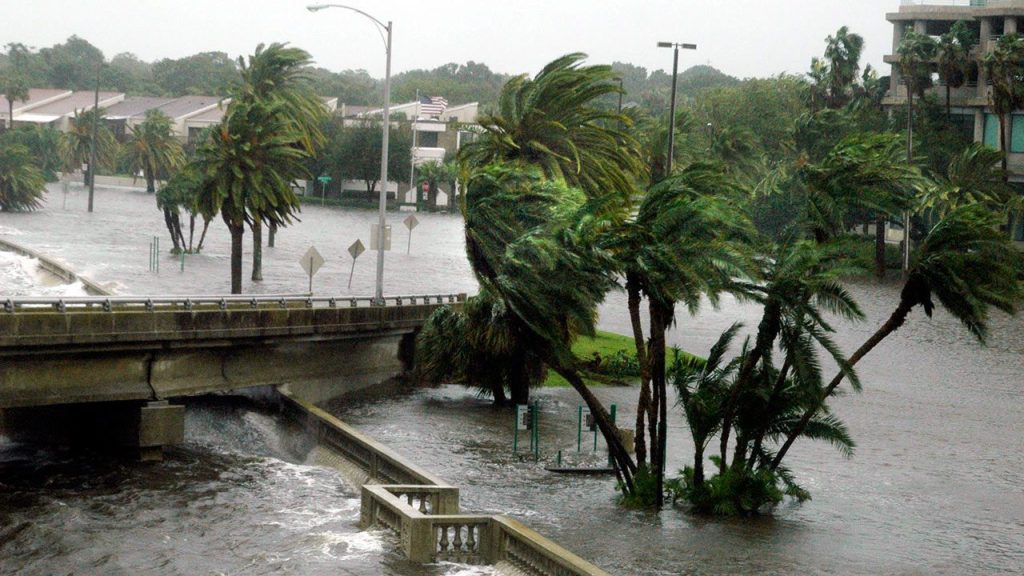Tampa, a city on Florida’s west coast, is known for its cultural heritage and natural landscapes. The Tampa Bay area has a variety of attractions for tourists, including beaches, theme parks, museums, and nightlife.
Weather is an important factor when visiting Tampa, as understanding its climate patterns can help travelers plan their trips more effectively and enjoy the city’s attractions to the fullest.
Tampa’s subtropical climate has unique characteristics in each season with warm temperatures of 73°F (23°C) all year. However, different months have varying precipitation rates and humidity levels.
This article covers nine important aspects of Tampa’s weather, such as temperature changes, seasons, hurricanes, and best times for outdoor activities. It’s helpful for travelers planning to visit Tampa.
Tampa’s Average Temperature

Tampa is a coastal city in Florida with a humid subtropical climate, hot and humid summers, and mild to warm winters. The average temperature ranges from 61°F (16°C) to 90°F (32°C).
The months of June through September typically exhibit the highest temperatures, while December and January are considered the coolest months.
Considering these temperature trends, it is evident why Tampa has become a popular destination for tourists seeking year-round outdoor activities such as beach visits, water sports, and nature exploration.
This favorable weather also contributes to an enjoyable experience for residents who take advantage of various local attractions including parks, gardens, and hiking trails throughout the region.
Humidity And Precipitation

Tampa’s coastal location in Florida results in high humidity levels throughout the year, making the air feel warmer than the actual temperature. This is due to the presence of large bodies of water, like the Gulf of Mexico and Tampa Bay, which create moist air masses over land.
Humidity levels peak during summer months when daily averages hover around 75%, while winter months see slightly lower values with an average closer to 65%.
Tampa receives 46 inches of precipitation annually, with a significant amount falling during its rainy season from June to September. Thunderstorms are frequent during this period and may cause heavy rainfall and flooding in low-lying areas.
Despite challenges from humidity and precipitation, people still enjoy Tampa’s abundant sunshine and warm climate.
Summer In Tampa

Tampa’s summer season is characterized by warm temperatures and high humidity, making it a popular destination for outdoor activities. Visitors should be aware of the weather conditions as they can impact their travel plans.
Tampa experiences frequent afternoon thunderstorms with lightning from June to September, known as the ‘Florida Suncoast Thunderstorm Season.’ These storms are brief but have intense downpours that may cause localized flooding in some areas.
Hurricane season in Tampa is from June to November, with the possibility of tropical storms and heavy rainfall. However, travelers who take the necessary precautions can still enjoy Tampa’s summer atmosphere.
Winter In Tampa

Tampa’s winter season provides a refreshing break from the summer heat.
With temperatures ranging from 50°F (10°C) to 70°F (21°C), visitors can expect mild and enjoyable weather during this time of year.
The humidity levels are significantly lower, making outdoor activities more comfortable and inviting.
Winter in Tampa is ideal for exploring its numerous attractions, such as Busch Gardens, or strolling along the Riverwalk without breaking a sweat.
Moreover, since it is not the peak tourist season, one may experience fewer crowds at popular destinations.
Although there may be occasional cold fronts and rainfall, Tampa’s winter climate is pleasant overall, providing a comfortable stay for those seeking refuge from harsher weather elsewhere.
Spring In Tampa

Spring in Tampa is a season characterized by mild temperatures and abundant sunshine, creating an ideal climate for outdoor activities.
From March to May, Tampa’s daytime highs range from the mid-70s to low 80s Fahrenheit, with nighttime lows in the upper 50s to mid-60s.
Rainfall from March to May is relatively low compared to summer months, with an average of two to three inches per month.
The pleasant weather conditions attract numerous tourists and locals alike who flock to various attractions such as Busch Gardens, Adventure Island water park, and Lowry Park Zoo.
Outdoor enthusiasts can take advantage of nearby nature preserves like Hillsborough River State Park or Lettuce Lake Park for hiking trails and wildlife spotting opportunities.
Tampa’s comfortable springtime climate offers visitors a wide range of experiences catering to diverse interests and preferences.
Fall In Tampa

Tampa’s autumn season offers a break from the summer heat and is an ideal time for visitors and residents to explore the city.
During the autumn season, temperatures in Tampa usually range from 60 to 80 degrees Fahrenheit, making it ideal for outdoor activities like strolling along the Riverwalk or visiting one of the many parks in the area.
As daylight hours start to wane and evenings become cooler, various events and festivals adorn Tampa’s social calendar.
These celebrations showcase local culture through food, music, and art while providing opportunities for travelers to engage with the community.
Fall in Tampa offers not only agreeable climatic conditions but also enriches one’s experience by fostering connections with diverse individuals who call this dynamic city home.
Storms And Hurricanes

Tampa experiences storms and hurricanes, which are important weather factors in the region.
As a coastal city located on the Gulf of Mexico, Tampa is no stranger to these natural phenomena.
The hurricane season officially runs from June 1st through November 30th, with peak activity typically occurring between August and October.
Being aware of potential tropical cyclones is crucial for residents and visitors on Florida’s west coast, even though not all systems in the Atlantic basin will affect the area.
One notable example showcasing Tampa’s vulnerability to such events was Hurricane Irma in September 2017.
Evacuations were widespread as a powerful storm threatened a direct hit on Tampa, but last-minute changes spared the city from Irma’s full force.
Nevertheless, even weaker tropical storms or remnants can cause localized flooding due to excessive rainfall and elevated tides along low-lying coastal areas.
Staying informed about current weather conditions and having an emergency plan is vital for personal safety when visiting or residing in Tampa during hurricane season.
Climate Extremes

Tampa experiences climate extremes, from scorching heat to torrential downpours, that are important to understand for exploring the city.
Heatwaves in summer months can push temperatures well above 90 degrees Fahrenheit, with humidity levels making it feel even hotter.
Hurricane season poses a significant threat as strong winds and heavy rainfall are common from June through November.
Tampa’s inviting atmosphere and diverse range of year-round activities make it an attractive destination despite its weather challenges.
Best Times To Visit Tampa

Tampa is a vibrant city on Florida’s Gulf Coast known for its warm climate and eclectic attractions. Spring and fall are the best times to visit for mild temperatures and outdoor activities.
From March through May, visitors can expect pleasant weather with average highs ranging from 75°F to 85°F (24°C to 29°C) and lows between 55°F and 68°F (13°C to 20°C). This period also coincides with various festivals such as Gasparilla Music Festival, Busch Gardens Food & Wine Festival, and Spring Training games for Major League Baseball teams.
During September through November, temperatures in Tampa remain comfortable while humidity levels begin to decrease after the summer heat. During this time, daytime highs range from around 82°F to 88°F (28°C to 31°C), whereas nighttime lows vary between about 65°F and 72°F (18°C-22°C).
Fall events in Tampa include concerts, Oktoberfest celebrations, and seasonal festivities at theme parks. These seasons are optimal for exploring indoor and outdoor attractions without extreme heat or precipitation. Highly recommended for travelers planning a trip to Tampa.
Frequently Asked Questions
What is the coldest month in Tampa Florida?
The coldest month in Tampa, Florida is January, with an average temperature of 63°F (17°C).
What kind of weather does Tampa Florida have?
Tampa, Florida has a humid subtropical climate with hot and humid summers, and mild winters.
What are winters like in Tampa Florida?
Winters in Tampa, Florida are generally mild, with average temperatures ranging from the mid-50s°F to the mid-70s°F (12-24°C).
Is Tampa cold or hot?
Tampa, Florida is generally hot and humid, with average temperatures ranging from the 70s°F to the 90s°F (20-30°C) throughout the year.
